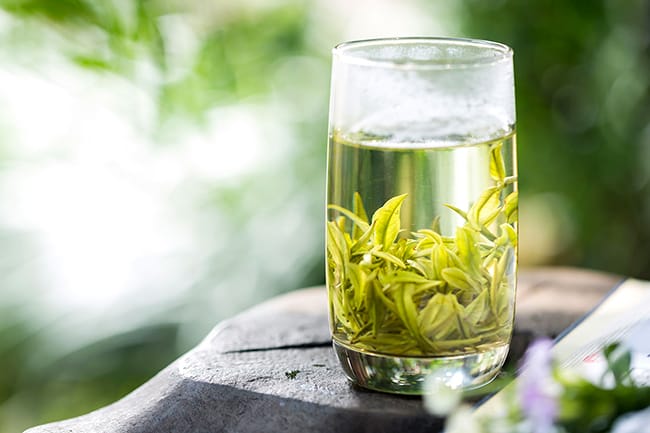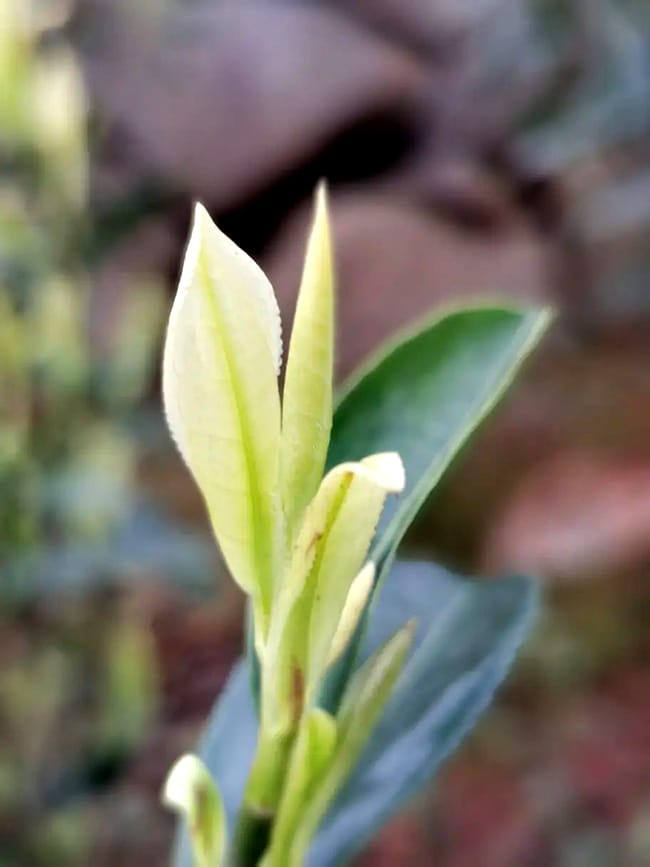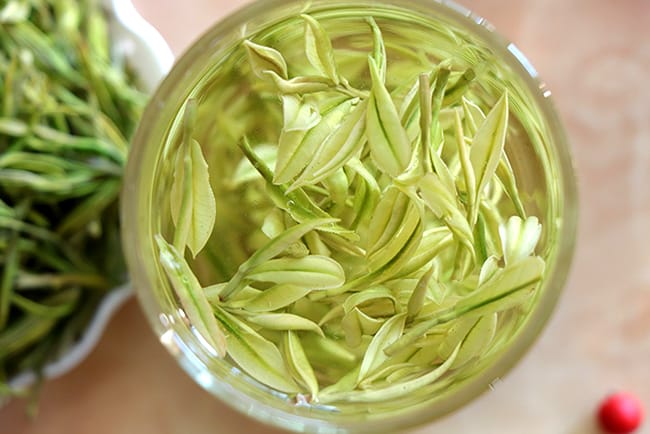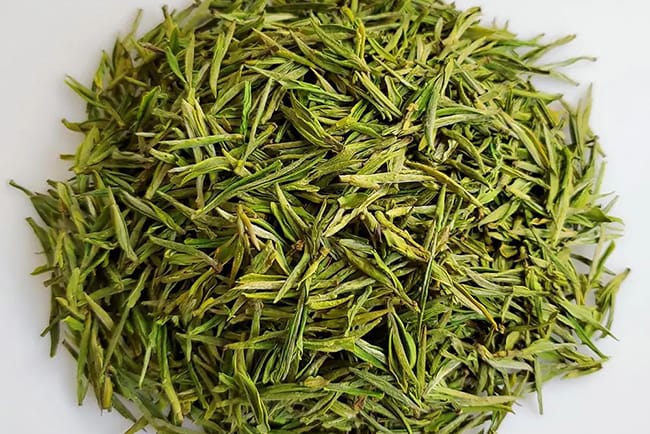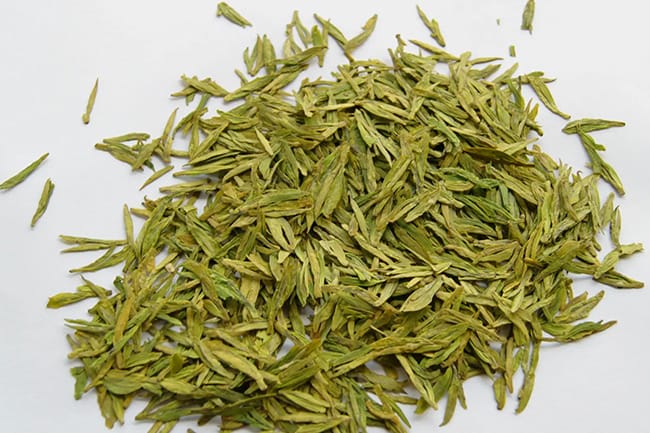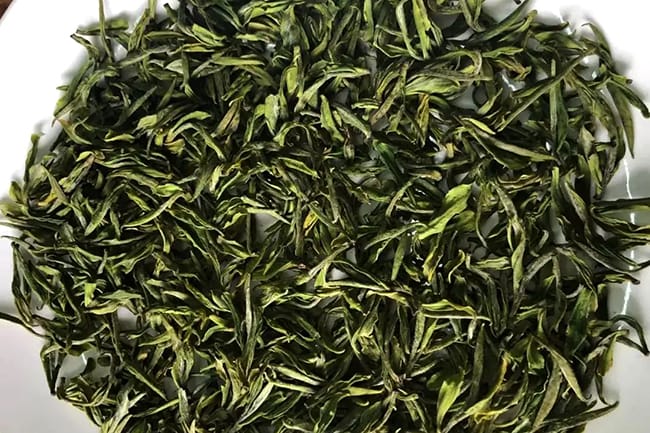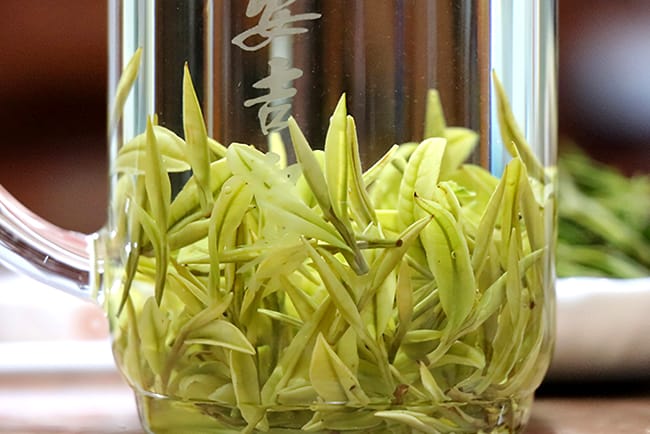Last Updated on 06/18/2022 by Desmond
While buying teas online, we often see that there is a kind of leaves named Anji Bai Cha under the green tea category. Pals who know some Chinese may feel confused – Bai Cha means White Tea in Chinese, and why did all the merchants classify it under green tea?
That’s because Anji Bai Cha is indeed a green tea; it hadn’t been fermented. And the “Bai”(white) in its name is to describe the raw leaves’ special appearance. Still, somebody also calls it Anji White Tea.
CONTENT
What Is Anji Bai Cha?
Anji Bai Cha origins in Anji, Zhejiang Province, China, and its existence can be traced to the Tang Dynasty. Lu Yu, the Tea Sage, had mentioned it in his great work “The Classic of Tea” – There is a white tea mountain three hundred miles farther east Yongjia. And an Emperor of the Song Dynasty, Huizong also reviewed this white tea in his work “Da Guan Treatise on Tea.” He indicated that this tea has very thin leaves, and it was born by accident and doesn’t cultivate by humans.
Although white tea is a kind of niche, it’s indeed one main type of Chinese teas. But we also know that white tea came in the Qing Dynasty. White tea got its name from its tiny fuzz-covered leaves; in the old Tang and Song Dynasty, there wasn’t any idea about this kind of tea. Thus, scholars speculated that the white tea Lu Yu and Huizong mentioned was a lost, strange leaf.
Worthing knowing, in ancient China, albinistic species were regarded as a symbol of good luck, like the white tiger and the white phoenix. So this mysterious white tea has always been yearned for by people.
In 1930, the Anji local official log recorded that dozens of wild white tea trees were found – Their tender leaves are as white as jade, yellowish after baked. But no more information about them ever since. Until 1982, while the Zhejiang government doing an agricultural resources survey, a hundred years of age or older white tea tree was found on a local 800 meters high mountain. Its tender leaves show pure white, only with slight green on the central vein. This mother plant produces few seeds, so the researchers were in great difficulty and finally cloned a tea tree type from it, which calls Bai Ye No.1.
Bai Ye No.1 is biologically a variant of the Camellia Sinensis and belongs to the low-temperature sensitive mutant. It is often mistaken for albinism due to the white leaves. In fact, this albinism is temporary but not permanent. The leaves only show white in the early spring, while the temperature is below 23℃, and just for about a month; that’s because of the loss of chlorophyll. As the time goes on and the temperature increases, the secondary leaves will turn light yellow-white gradually, and finally back to green when the summer comes.
Just the same as most green teas, the best harvest season of Anji Bai Cha is days before Qingming(April 5) to Guyu(April 20). The leaves of the plants are real white during this period, very unique. Tea masters need to collect the leaves and process them into tea in about a short month, or they will lose authenticity. The dried leaves after being processed, look yellow-green, just the same as the ordinary green tea; they only return jade white after brewing.
A small piece of news worth mentioning, on June 5 this year, 150 thousand Bai Ye No.1 saplings were transported to Sichuan for experimental cultivation. This is the first time for this unique plant to grow in such a high-altitude place. Tea lovers are all expecting them to produce more excellent leaves because everyone knows the high-mountain teas’ quality will be better.
Processing and Types
Leaves are classified according to the processing method(or the fermentation degree), so Anji Bai Cha belongs to green tea. Just like the typical green teas, the primary processing of Anji Bai Cha is as follows: Picking → Placing → Fixation → Rolling → Drying; it hadn’t been any fermenting.
Due to the different crafts, the Anji Bai Cha sold on the market now are typically in 3 types: Phoenix, Dragon, and Orchid.
Phoenix
The Phoenix-type is the most common Anji Bai Cha shape. It is made from one bud to the second leaf, straight and little bifurcate at the tip, it just looks like the phoenix tail, so it got the name. Now, most Phoenix Anji Bai Cha is rolled by machine and then baked to dry.
Dragon
The Dragon-type Anji Bai Cha is made by imitating the Longjing tea‘s processing. Press the fresh leaves, then fry to dry, resulting in a stronger flavor. Due to the cost reason, few tea brands produce the Dragon-type Anji Bai Cha, so it is hard to buy.
Orchid
The Orchid-type Anji Bai Cha belongs to a new craft, and some local factories produce it. Its dried leaves look like orchids; the tip is tight, tiny expand in the middle, and the whole body is slightly curly. But it doesn’t have an orchid flavor.
How’s Anji Bai Cha Taste?
Due to the loss of chlorophyll, Anji Bai Cha not only lost the green color but also got lower tea polyphenol content than other teas, just about 10% to 14%. As a result, its antioxidant ability maybe not be as good as other teas. Fortunately, as compensation, it is almost without any bitterness, and it got a high theanine content, about 5% to 10.6%; it’s 3-4 times than that of common Chinese green teas.
Because of the high theanine content, Anji Bai Cha tastes fresh, brisk, and with a forest fragrance, its aftertaste is also mild and lasts long. To the Dragon-type one, it is fried, so its aroma will be much stronger than the Phoenix and the Orchid type.
Some people often compare the fresh taste of Anji Bai Cha with Japanese Gyokuro. They are made in different processing, and even the cultivation way is not the same. In fact, the Anji Bai Cha’s fresh taste is far away from Gyokuro.
How To Brew
Anji Bai Cha belongs to fresh green tea; we should not brew it with boiling water but below about 85℃. A set of glass teawares seems to be a nice choice, you can see the leaves return to jade-like green, and the sight they expand slowly in the water like a phoenix tail.
- Clean and preheat your teawares;
- Put about 5g Anji Bai Cha in the teapot;
- Fill in 70-80℃ water(about 350ml), cover, and steep for about 2-3 minutes;
- Pour out the infusion, don’t leave a drop in the teapot;
- Enjoy;
Storing Method
Whether the leaves got an individual packaging or not, you should store them well with an excellent airtight iron container. The storing place should be dry, dark, and relatively cool. If you have no confidence in the container’s airtightness, don’t put it in a fridge; the dried leaves will absorb the water in the air and the smell from other food, and lose the flavor.
Related Reading: What Should We Pay Attention To During Tea Storage?
The optimum flavor stage of green tea is typically a year, and so is Anji Bai Cha; that means you’d better finish consuming it ASAP.
